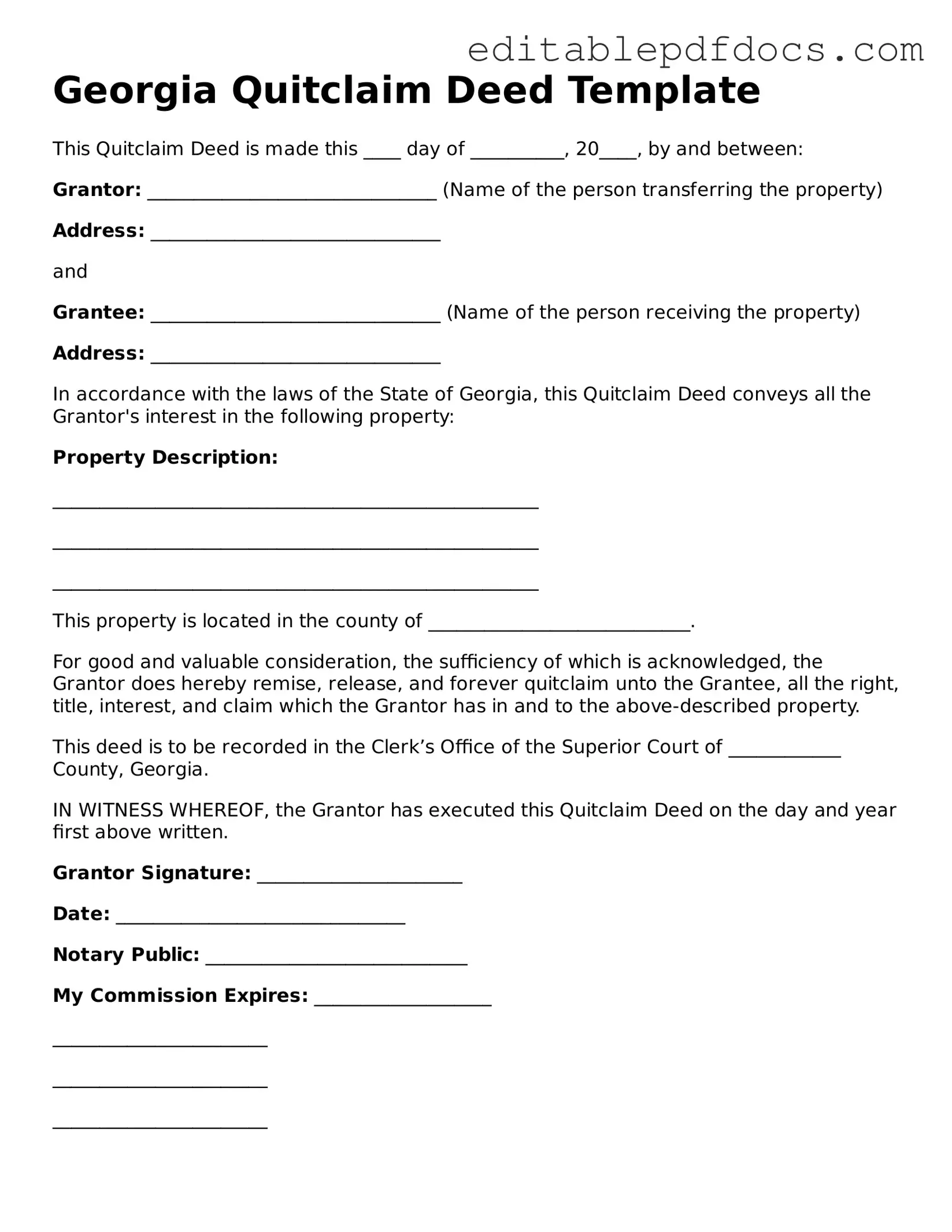The Georgia Quitclaim Deed form serves as a crucial tool for property owners looking to transfer their interest in real estate quickly and with minimal complications. This form allows an individual, known as the grantor, to convey their rights to a property to another party, referred to as the grantee, without making any guarantees about the property’s title. It is particularly useful in situations such as transferring property between family members, settling an estate, or clearing up title issues. Unlike warranty deeds, which provide assurances about the title's validity, a quitclaim deed offers no such protections, making it essential for both parties to understand the implications of the transfer. The form must be completed with specific details, including the names of the parties involved, a legal description of the property, and the date of the transfer. Once executed, the quitclaim deed must be filed with the county clerk’s office to ensure that the transaction is officially recorded and recognized. Understanding how to properly use the Georgia Quitclaim Deed form can help streamline property transfers and avoid potential disputes in the future.
